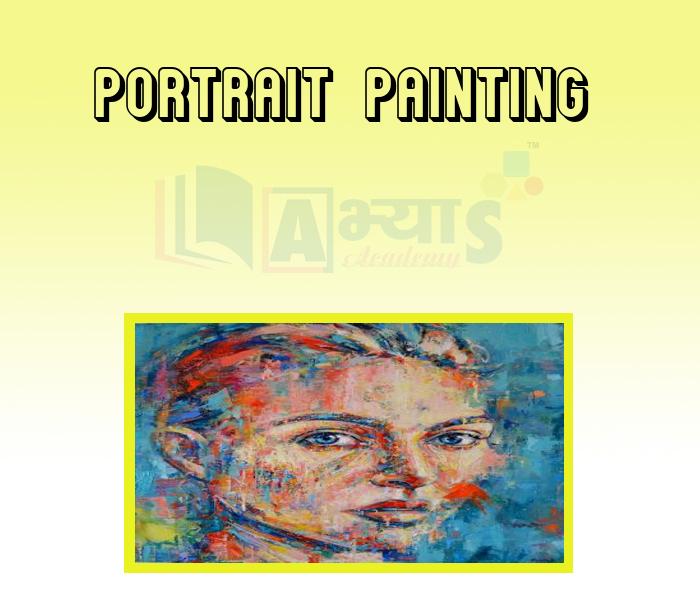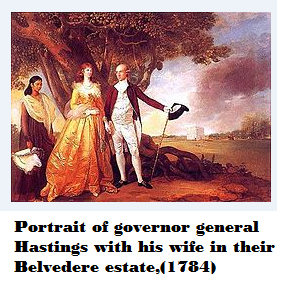Portrait Painting









Portrait Painting
Portrait Painting : Portraits became one of the most popular art styles in the ruling circle.Both Indian and British wanted to see themselves on the canvas. Colonial portraits were bigger in size and used to appear real size of portraits depicted the power and status of their patrons.
Portraits of Authority: Another tradition of art that became immensely popular in colonial India was portrait painting. The rich and the powerful, both British and Indian, wanted to see themselves on canvas. Unlike the existing Indian tradition of painting portraits in miniature, colonial portraits were life-size images that looked lifelike and real. The size of the paintings itself projected the importance of the patrons who commissioned these portraits. This new style of portraiture also served as an ideal means of displaying the lavish lifestyles, wealth and status that the empire generated.
A portrait painting became popular, many European portrait painters came to India in search of profitable commissions. One of the most famous of the visiting European painters was Johann Zofanny. He was born in Germany, migrated to England and came to India in the mid-1780s for five years. The Indian servants and the sprawling lawns of colonial mansion appear in such portraits. The Indians are shown as submissive , as inferior, as serving their white masters, while the British are shown as superior and imperious they flaunt their clothes , stand regally or sit arrogantly , and live a life of luxury . Indians are never at the center of such paintings; they usually occupy a shadowy background.
Many of the Indian nawabs too began commissioning imposing oil portraits by European painters. Later on the British posted residents in Indian courts and began controlling the affairs of the state, under- mining the power of the king. Some of these nawabs reacted against this interference; others accepted the political and cultural superiority of the British. They hoped to socialize with the British, and adopt styles and tastes. Muhammad Ali Khan was one such nawab. After a war with the British in the 1770s he became a dependant pensioner of the East India company. But he nonetheless commissioned two visiting European artists. Tilly Kettle and George Willison, to paint his portraits, and gifted these paintings to the king of England and the directors of the east India company. The nawab had lost political power, but the portraits allowed him to look at himself as a royal figure.

Students / Parents Reviews [10]
I have spent a wonderful time in Abhyas academy. It has made my reasoning more apt, English more stronger and Maths an interesting subject for me. It has given me a habbit of self studying

Yatharthi Sharma
10thOne of the best institutes to develope a child interest in studies.Provides SST and English knowledge also unlike other institutes. Teachers are co operative and friendly online tests andPPT develope practical knowledge also.

Aman Kumar Shrivastava
10thAbhyas Methodology is very good. It is based on according to student and each child manages accordingly to its properly. Methodology has improved the abilities of students to shine them in future.

Manish Kumar
10thAbout Abhyas metholodology the teachers are very nice and hardworking toward students.The Centre Head Mrs Anu Sethi is also a brilliant teacher.Abhyas has taught me how to overcome problems and has always taken my doubts and suppoeted me.

Shreya Shrivastava
8thIt was good as the experience because as we had come here we had been improved in a such envirnment created here.Extra is taught which is beneficial for future.

Eshan Arora
8thMy experience with Abhyas is very good. I have learnt many things here like vedic maths and reasoning also. Teachers here first take our doubts and then there are assignments to verify our weak points.

Shivam Rana
7thMy experience was very good with Abhyas academy. I am studying here from 6th class and I am satisfied by its results in my life. I improved a lot here ahead of school syllabus.

Ayan Ghosh
8thAbhyas is a complete education Institute. Here extreme care is taken by teacher with the help of regular exam. Extra classes also conducted by the institute, if the student is weak.

Om Umang
10thBeing a parent, I saw my daughter improvement in her studies by seeing a good result in all day to day compititive exam TMO, NSO, IEO etc and as well as studies. I have got a fruitful result from my daughter.

Prisha Gupta
8thA marvelous experience with Abhyas. I am glad to share that my ward has achieved more than enough at the Ambala ABHYAS centre. Years have passed on and more and more he has gained. May the centre flourish and develop day by day by the grace of God.
